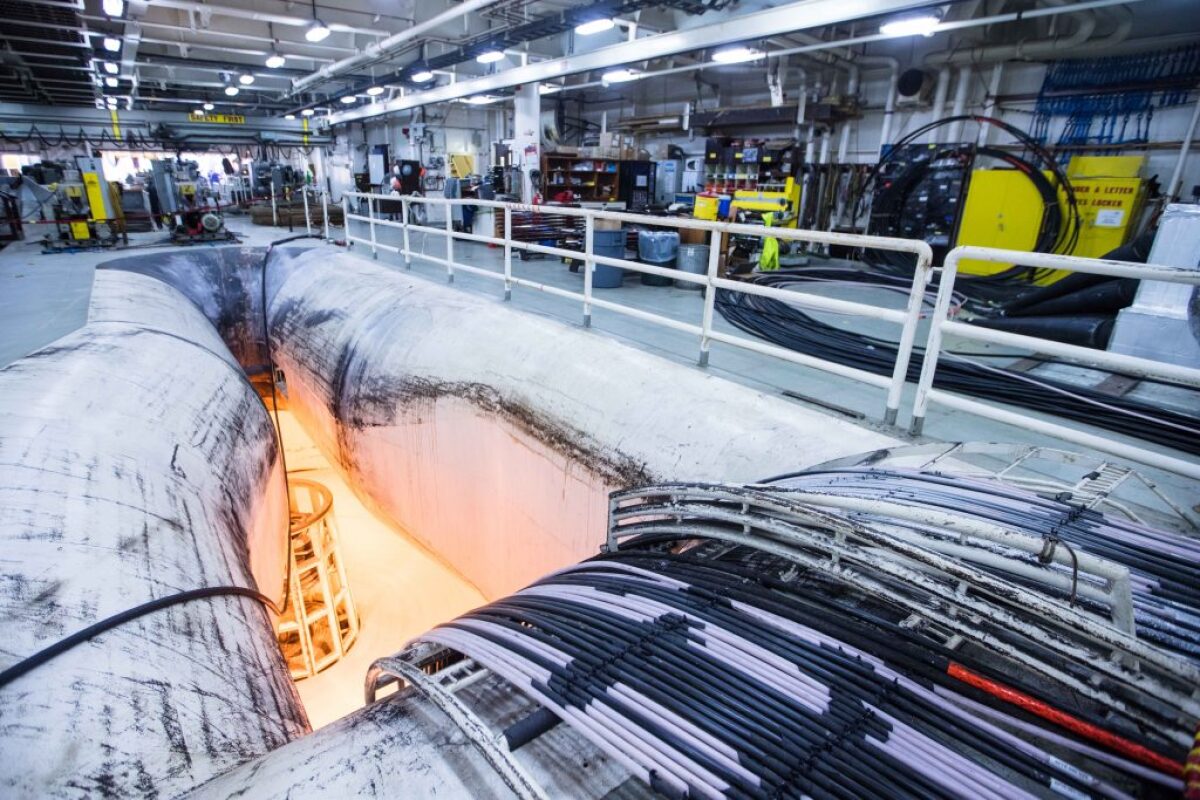The highest-capacity data cable stretching across the Atlantic has now been completed. A consortium including Microsoft, Facebook and Telxius recently finished threading the complex 4,000-mi (6,400-km) cable across the ocean floor from Virginia Beach, Virginia to Bilbao, Spain to produce a high-speed data connection that will be more secure from disruption by natural disasters.
Though modern telecommunications may conjure up images of lasers skittering between communication satellites high above the Earth, the backbone of today's internet is heavily dependent on a giant spider web of cables spanning between continents and along coast lines carrying everything from tweets to high-definition live streaming videos.
Unfortunately, these cables are vulnerable to natural and manmade disasters. In the aftermath of the October 2012 Hurricane Sandy that wreaked havoc on the east coast of the United States, wireless, internet, and home telephone services were knocked out for days. Therefore, it was decided by Microsoft and Facebook, along with Telxius, to develop, design, build, and lay a new cable farther south than existing transatlantic connections.

Work on the new cable, called Marea or "Tide" in Spanish, began less than two years ago and Microsoft says the project was completed three times faster than a typical undersea cable project. The route for the cable required the surveying of the seabed to depths of up to 11,000 ft (3,300 m) to avoid hazards that include active volcanoes, earthquake zones, and coral reefs.
Marea consists of eight pairs of fiber optic cables encased in copper, a hard-plastic protective layer, and a waterproof coating. The whole thing measures 1.5 times the diameter of a garden hose and is buried in a set of trenches close to shore to protect it from fishing nets and anchors, but lies open on the seabed in the mid-ocean.
Marea is expected to go operational early next year when it will carry up to 160 terabits of data per second, which is 16 million times faster than the average home internet connection. This is the equivalent to 71 million high-definition videos streaming simultaneously and will allow the cable to serve hubs in Africa, the Middle East, and Asia. In addition, its open design will allow it to be upgraded as demand grows.

"Marea comes at a critical time," says Brad Smith, president of Microsoft. "Submarine cables in the Atlantic already carry 55 percent more data than trans-Pacific routes and 40 percent more data than between the US and Latin America. There is no question that the demand for data flows across the Atlantic will continue to increase and Marea will provide a critical connection for the United States, Spain, and beyond."
Source: Microsoft









